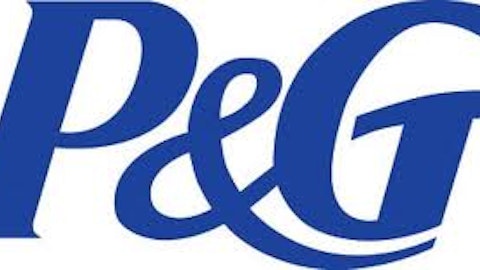Wall Street fell recently as high-yielding dividend stocks lost their traction. This was triggered by fears raised by Federal Reserve Chairman Ben Bernanke that the Fed’s bond buying program may soon end earlier than expected. As a result, many dividend stocks fell. Not even the high profile and more stable stocks like Johnson & Johnson (NYSE:JNJ) were spared from falling.
Another probable factor that caused the massive sell-off of dividend stocks is the rising yield of Treasury notes. The 10-year Treasury note soared sharply over the past weeks and it is now close to its 13-month peak. This shifted the interests of many investors from ‘defensive’ stocks to Treasuries, thereby sending the prices of dividend stocks down.
High yielding dividend stocks versus bonds
Stocks and Treasuries tend to move in opposite directions. So, too, with equities and bonds. A high-yielding dividend strategy may potentially give you higher returns from investment, but the risk is high as well. Compared to U.S. Treasures and bonds, your investment on stocks will be on an unstable ground. This is due to the volatility of the market.
Stocks vs. treasuries
For the past 60 years, the worst one-year total returns of a high-yielding dividend strategy were -36%. For a two-year period the worst seen was -39%, and over three years -33%.
Investing on five-year Treasuries, on the other hand, also has its bad times, but never as bad as investing in high-yielding dividend stocks. The worst returns for a one-year strategy were only -5.1%, while over two years the worst end at -1.7%. The three-year strategy on Treasuries netted the worst returns at 1.6%.
Similarly, equity investment when compared to bonds may give higher returns, but they can also give worse returns. In another comparative study between equity and bonds, equity showed higher volatility at 20% during the period 1998 to 2008. Bonds’ volatility, on the other hand, was only 5%.
During the same period, the lowest performance of equity, based on S&P 500 index, was high at -37%. Meanwhile, the best performance also peaked at 37%. In contrast, bonds based on Barclays Capital bond index posted the lowest return at -3% against peak return of 18%.
Apparently, there is a wide gap between the worst times of a high-yielding dividend investing strategy and a Treasuries-investing strategy. The same is true between bonds and equities.
The safest mediums are bonds and Treasuries compared to high-yielding equities. But on the downside, the potential returns are also low. You will not be able to maximize the probable earnings of your funds.
Nonetheless, the law of investing still applies regardless of your investment choices. The higher the potential returns the riskier it becomes. On the other hand, the safer the investments the returns are lower as well. But if you invest on the right high-yielding dividend stocks with stable financials, the risk is minimized. Your investment will be arguably safe while giving you long-term high earnings altogether.
Investing strategies on high yielding dividend stocks
If you want to pursue your investing strategy based on high-yielding dividend stocks then do so with well-calculated risk. This can be done by investing in large cap dividend stocks with higher yields. Large cap companies provide a sort of safety net to your investment. They won’t go down overnight. This gives you enough time to bail out, either with minimal loss or still earning while retreating.
Large cap companies with steady cash flows have secured a relatively stable position in the industry. Despite the attacks from competitors, negative speculation and news reports, these companies will survive. While share prices may slow down or take a dip, shares will eventually bounce back over time.
The Coca-Cola Company (NYSE:KO)
One good example is The Coca-Cola Company (NYSE:KO).
The company presently has a yield of 2.63%.
A large cap company with market capitalization of $184 billion, The Coca-Cola Company (NYSE:KO) has been public since 1919. Its present yield is higher than the 2012 average yield of a U.S. 10-year Treasury note at 1.79%. The annualized dividend of The Coca-Cola Company (NYSE:KO) is $1.12 per share, and the yearly dividend increases year-over-year.
On June 4, The Coca-Cola Company (NYSE:KO) inaugurated its $200 million bottling plant in Myanmar. While Burma is a small market, the company’s expansion is a sign of its commitment for long-term growth. This is important for its future performance and financial stability.
Johnson & Johnson
Another good example is Johnson & Johnson (NYSE:JNJ).
The current yield on this stock is at 3.11%.
Johnson & Johnson (NYSE:JNJ) has an attractive dividend yield, which is better than the U.S 10-year Treasury note. Its annualized dividend is $2.64 per share, with yearly growth seen for the last ten years.
Johnson & Johnson (NYSE:JNJ) reported very impressive performance for its oncology and immunology products. Its latest financial report showed oncology product sales grew 33%, while the immunology product sales also increased by 5.2%.
On top of that, Johnson & Johnson (NYSE:JNJ) successfully secured approval from the U.S. Food & Drug Administration (FDA) for its diabetes drug Invokana. This is a potential blockbuster drug. More importantly, its pharmaceuticals segment has more than 10 potential new products filing by 2017. This is projected to fuel the growth of the company.
AT&T Inc. (NYSE:T)
AT&T Inc. (NYSE:T) is a third stock worth consideration. It has one of the highest yields in the market at 5.08%.
This is well above the average yields of Treasury notes and bonds. The annualized dividend of AT&T Inc. (NYSE:T) is $1.80 per share, increasing year-over-year since 2004.
AT&T Inc. (NYSE:T) also has an upside potential of about 20%, taking into account its fair market value and expected return.
Summary
In a nutshell, dividend stocks used to be safe havens for investors looking for higher yields. But when the market gets too crowded, as investors are left with fewer options, it becomes relatively unsafe in some cases. The market may drastically shift focus when better alternatives show up as the economy improves. Aside from that, if interest rates in savings and bonds are increased, this may trigger massive sell-offs. Many investors will shift their investments to safer fixed income mediums.
However, wise and cautious dividend investors will not be affected by sell-offs triggered by speculations and market outlook. The current slump of dividend stocks opens another opportunity to secure a good position for dividend stock investing.
The article 3 High Dividend Stocks to Consider at Market Dips originally appeared on Fool.com and is written by Nur Tarkak.
Nur Tarkak has no position in any stocks mentioned. The Motley Fool recommends Coca-Cola and Johnson & Johnson. The Motley Fool owns shares of Johnson & Johnson. Nur is a member of The Motley Fool Blog Network — entries represent the personal opinion of the blogger and are not formally edited.
Copyright © 1995 – 2013 The Motley Fool, LLC. All rights reserved. The Motley Fool has a disclosure policy.





